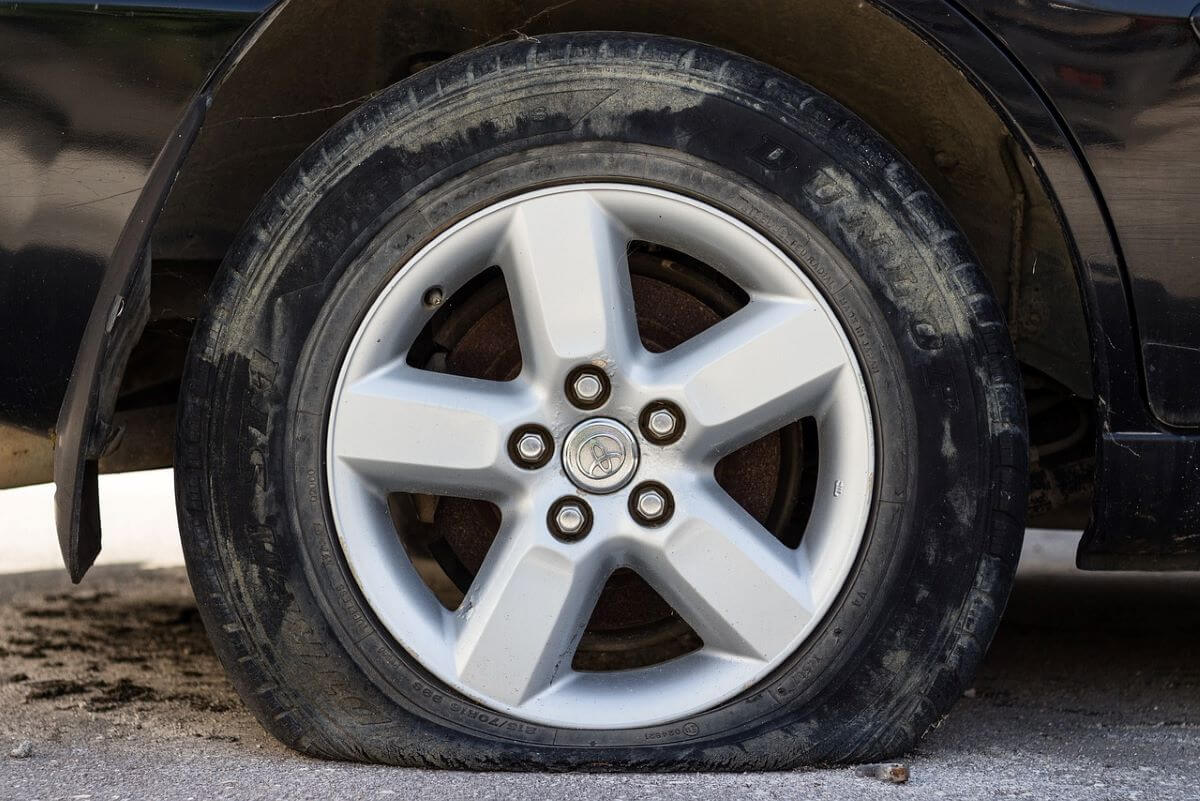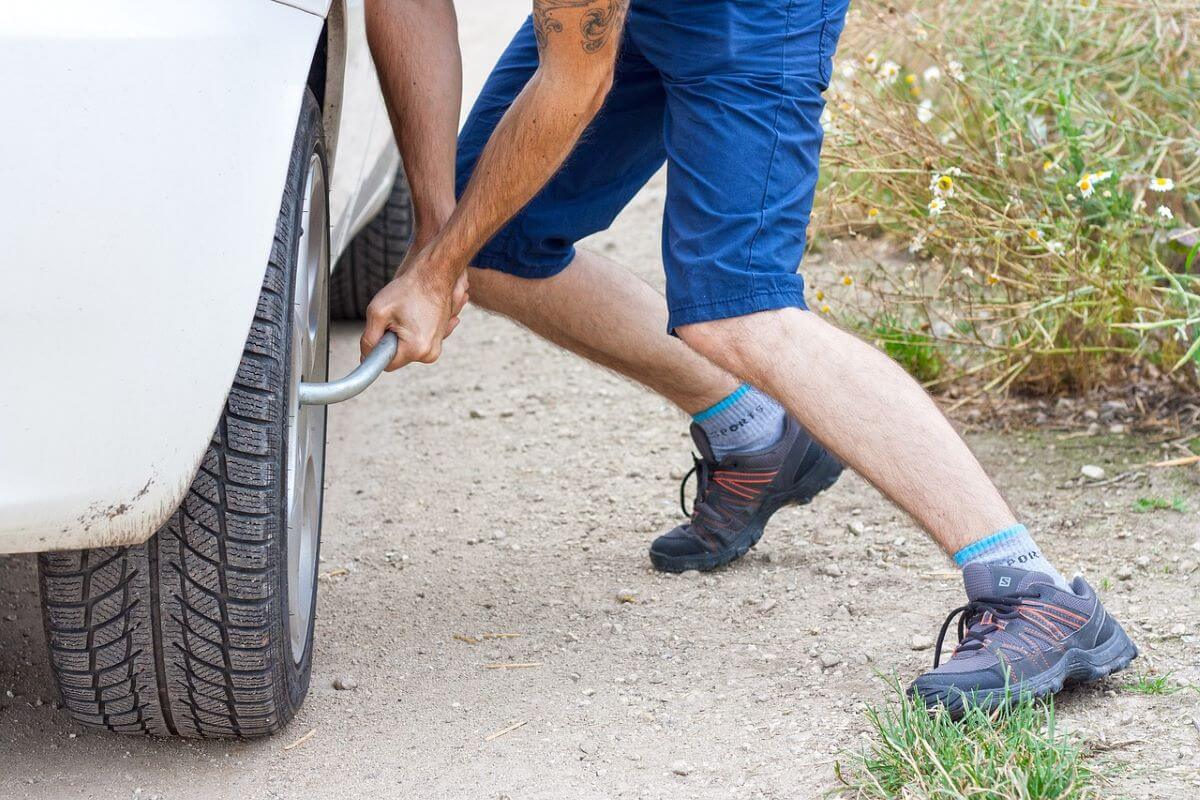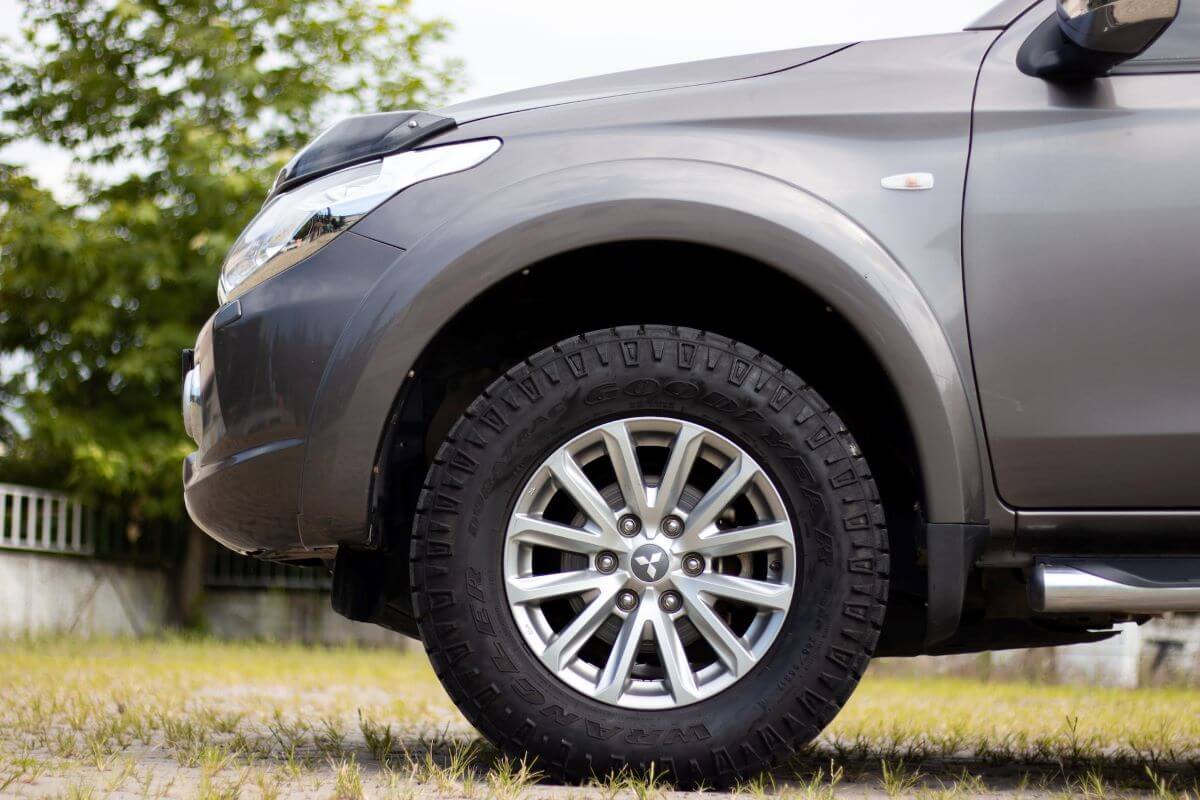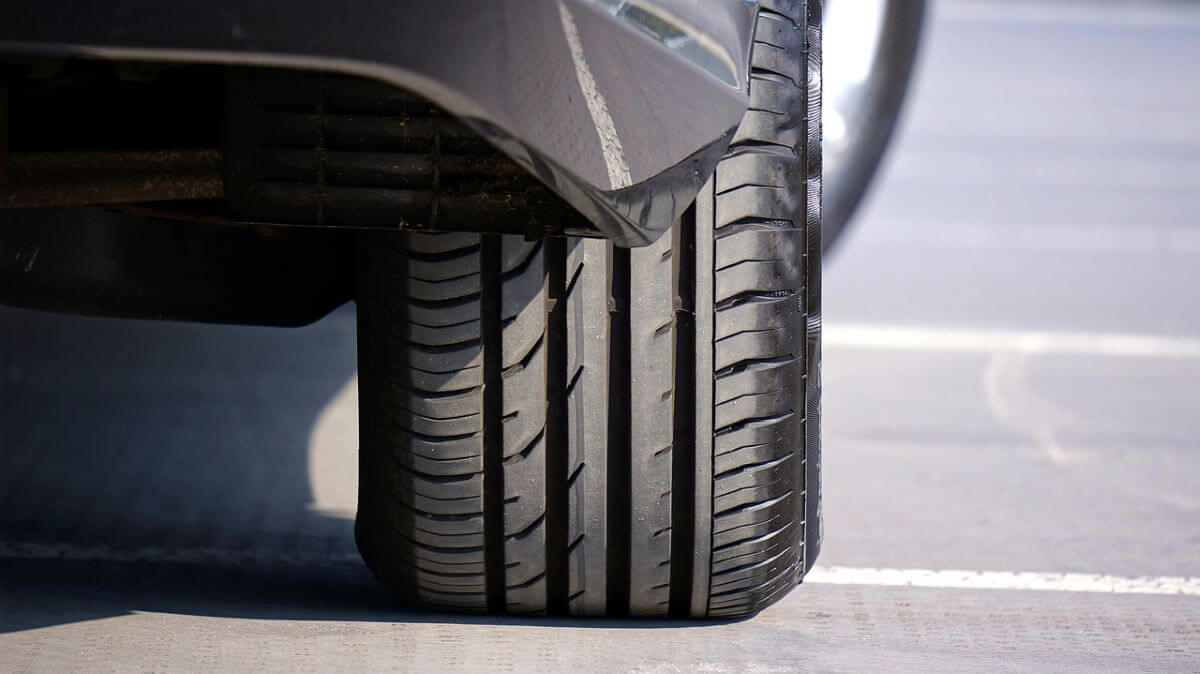At a glance:
- Be prepared – refer to our handy checklist and ensure you have the essential kit you need to safely change a flat tyre
- Follow our easy step-by-step guide to changing a tyre safely, no matter where you are
- Never try to change a flat tyre on the motorway – follow our guidance and stay safe
- If in doubt or in danger, always call for roadside assistance
Sometimes it seems the roads have it in for us and our tyres just can’t cope. Having said that, at least once in a lifetime, most of us will have experienced a burst tyre. It’s just part and parcel of being a driver.
Knowing how to change a tyre is therefore a really important skill to have, as it might just save your bacon should you end up with a flat tyre in the middle of a long motorway drive.
But what tools do you need to change your car tyre? And how exactly do you go about removing it safely? Read on for our practical guide to changing a tyre safely.

Burst tyre checklist
Before we get into the nitty-gritty of how to change a blown-out tyre, let’s start at the beginning. What equipment do you need to change a tyre? Below, you’ll find a helpful checklist of everything you need to swap tyres safely.
Essential:
- Spare wheel – check this is both present and fully inflated, because the last thing you need when you come to change a burst tyre is a flat or absent spare. We recommend checking this regularly so you don’t get caught short.
- A car jack – this is the tool you’ll need to raise your car off the ground to change the tyres. Some cars come with them, and unfortunately, some don’t. But ideally, you’ll have sourced one that’s specifically designed for your car.
- Wheel chock or wedge – these are what will stop your car from rolling once you’ve jacked it. If you don’t have any wheel chocks, large bricks or rocks may also do the trick.
- Car handbook – this will contain specific instructions and reference points for your vehicle.
- Wrench – this tool will help you remove the nuts and bolts, so you can get the old tyre off and secure the new one in place.
- Wheel nut key – a lot of car tyres will have locked nuts or bolts that can only be opened using a unique key. Again, some cars come with them, some don’t. However, if your car does require a wheel nut key, it will need to be the specific one for your car.
- Tyre pressure gauge – this is necessary for checking the pressure of the replacement tyre.
Desirable:
You’ll still be able to change a burst tyre without the following items but having them will make the experience a lot easier.
- Torch – this is only really necessary if you’re changing a tyre in the dark.
- Gloves – not only will these stop your hands from getting dirty but will provide some much-needed protection too.
- Small plank of wood – placing a small plank of wood underneath the jack can stop it from sinking into the ground, and thus being unable to raise the car properly.
- Warning cone – a reflective warning triangle will alert on-coming traffic to your presence.
- Reflective wear – again, this will alert oncoming drivers to your presence, and in turn, reduce the risk of an incident.

Our step-by-step guide to changing a tyre
Now we’ve got the basics covered, let’s get into the reason you’re here; how to change a flat tyre. We’ve broken it down into 10 straightforward steps that are simple and easy to follow.
Our step-by-step guide should see you back on the road in a safe and timely manner. So without further ado, let’s get started.
Step one – stop safely
If your tyre bursts unexpectedly on the motorway, or any road for that matter, your natural reaction might be to pull over instantly. But before you do, you need to make sure that not only are you stopping safely but you are pulling into an appropriate area too.
Start by activating your hazard warning lights as soon as you know there’s a problem. This will let other drivers know you’ve run into some unexpected difficulty.
No matter how tempting or instinctive it is, do not slam your brakes on or make any sudden turns. This could cause an accident. Instead, carry on driving as you normally would and carefully scan the area for a secure place to pull off the road.
Never pull over on the hard shoulder, by busy traffic, or on a bend. This is dangerous. The ideal spot to stop is level, hard standing, and on a straight stretch.
Soft ground will stop the jack from functioning correctly and uneven ground could cause your car to roll (even with stoppers). If the location isn’t suitable then you might need to call in a professional.
Our helpful guide, what to do if your tyre bursts, has some more insights on this.
Step two – prepare the vehicle
Now you’ve stopped safely it’s time to get your car ready. Turn your engine off, but keep the hazard lights on. You’ll also need to put your car in first gear and turn the handbrake on.
Then, make sure that all passengers exit the vehicle and are stood away from any oncoming traffic.
If you have them, put your high-vis on and place your warning triangle roughly 45 metres behind your car so that any traffic coming up is alerted.
Next, grab all the tools you need to change the popped tyre, including the spare wheel.
Step 3 – position the chocks
The wheel chocks will stop your car from rolling once you’ve raised it. Position a chock on the opposite wheel to the one with a puncture. For example, if your left-front tyre has a puncture, put a chock behind the right-rear wheel. If your left-rear tyre is flat, you need a chock in front of the right-front. Use chocks for both front/rear wheels (as appropriate) if you have them.
Bricks or large rocks can do the same job if you don’t have a dedicated chock.
Step 4 – loosen the wheel nuts
Next, you need to loosen the wheel nuts. These can be found in a small circle at the centre of the wheel.
It’s more than likely at least one of the wheel nuts will have a lock function that requires a unique wheel lock key. If you don’t have one, try with a wrench, but if that won’t do the job either, you’ll need to call out for assistance.
If you can unlock the nuts, don’t remove them completely just yet. Simply loosen them to a point where they can be turned by hand.
Important: Always loosen the wheel nuts before you start jacking the car up, as the vehicle will be unstable after you raise it – meaning you won’t be able to get as much leverage.
Step 5 – raise the car using the jack
Now it’s time to lift your car off the ground, so you can remove the popped tyre and replace it with the new one.
Your vehicle handbook will show you where your car’s dedicated jacking points are. They’ll potentially be marked on the vehicle, too.
Place the jack on the same side of the car as the blown-out tyre. Then use it to raise the car roughly 10-15 cm. It needs to be high enough for you to be able to change the tyres with ease.
Important: Never place any part of your body under the car whilst it’s raised. If the jack were to malfunction whilst part of you is underneath it, it would be very painful.
Step 6 – remove the burst tyre
At this point, you can now fully remove those loosened wheel nuts by hand. If they’re still a bit tough you can use the wrench to help you.
Once you’ve completely removed all the nuts and bolts, you can now remove the popped tyre. Firmly pull the tyre towards you and it should come off fairly easily.
Step 7 – mount the spare wheel
Out with the old and in with the new. Now it’s time to grab your new tyre and line it up with the lug bolts. Once you’ve pushed it in, you should see the top of the lug bolts appear.
Next, place the wheel nuts and bolts back on. You can do this by hand at first, to make sure they’re lined up properly. Then, once they’re secure you can use the wrench.
Step 8 – lower the car
Now the new tyre is in place, you can bring the car back to ground level. Use the jack to lower the vehicle, and then remove the jack from underneath the car.
Once your car is back on solid ground you should give the wheel nuts one last go with the wrench. This will ensure the new tyre is completely secure.
Step 9 – check the tyre pressure
Now that your spare tyre is in place, you just need to make sure it’s properly inflated. Your car’s handbook will tell you the appropriate level of pressure and you can use the tyre pressure gauge to measure it.
If you don’t have a pressure gauge, you may be able to drive carefully to the nearest petrol station and check it there.
Our top three tyre check guide has some more insights on this.
Step 10 – repair the blown-out tyre
It’s time to hit the road again. With your popped tyre now replaced, you can pack up all of your equipment and continue with your journey.
We’d strongly advise that you get your burst tyre repaired or replaced as soon as possible. This is because spare tyres aren’t as durable as normal ones and in many cars take the form of space-saver tyres that are only used to get you to a place of safety.
Take the popped tyre to any technician, garage or repair shop, and they will be able to tell you if they can repair it or if it needs replacing altogether.

Top tyre-changing tips
Here are some handy hints and tips that will make for a seamless tyre changing experience:
- Make sure you wear gloves and be mindful when switching tyres. If punctured, the old tyre may have sharp steel protruding from it.
- If fitting a space saver spare tyre, remember the speed restrictions that it imposes, e.g., no more than 50mph.
- Practice makes perfect, so why not give these steps a run-through from the comfort of your garage or driveway? This will mean you’ll be better prepared should you experience a blown-out tyre in real-time.
- Locate all the equipment you need to change a tyre that we mentioned earlier and store them in the boot of your car.
- Have your roadside cover details to hand. Sometimes due to factors outside your control, it might not be possible for you to change the tyre yourself. In which case, it will be useful to have your details ready.
Can I change a tyre on the motorway?
No, you should not attempt to change a tyre yourself on the motorway. Even if you have experience changing a tyre, it’s extremely dangerous to do so on the hard shoulder. The risk of being harmed by oncoming vehicles is far too high, especially if the blown-out tyre is on the same side of traffic.
If your tyre bursts on the motorway you have two options:
- If a reasonable distance away, you can pull off the motorway and stop at a suitable location to change the burst tyre.
- You may pull over in a safe place and wait for roadside assistance – you and your passengers should, where possible, keep well away from your vehicle and moving traffic .

Final words of wisdom
It can be incredibly worrying when your tyre bursts suddenly on the motorway. Not to mention an inconvenience too, especially if you’re trying to get somewhere on time, such as the airport.
That being said, your safety should come before anything else. If at any point you feel the spot you’ve pulled into is inadequate or your tools just aren’t quite cutting it – you must call in the help of a professional.
A vehicle recovery service will have access to professional equipment, which allows for a much speedier and safer repair to be conducted. If you are in any doubt, call for help.


